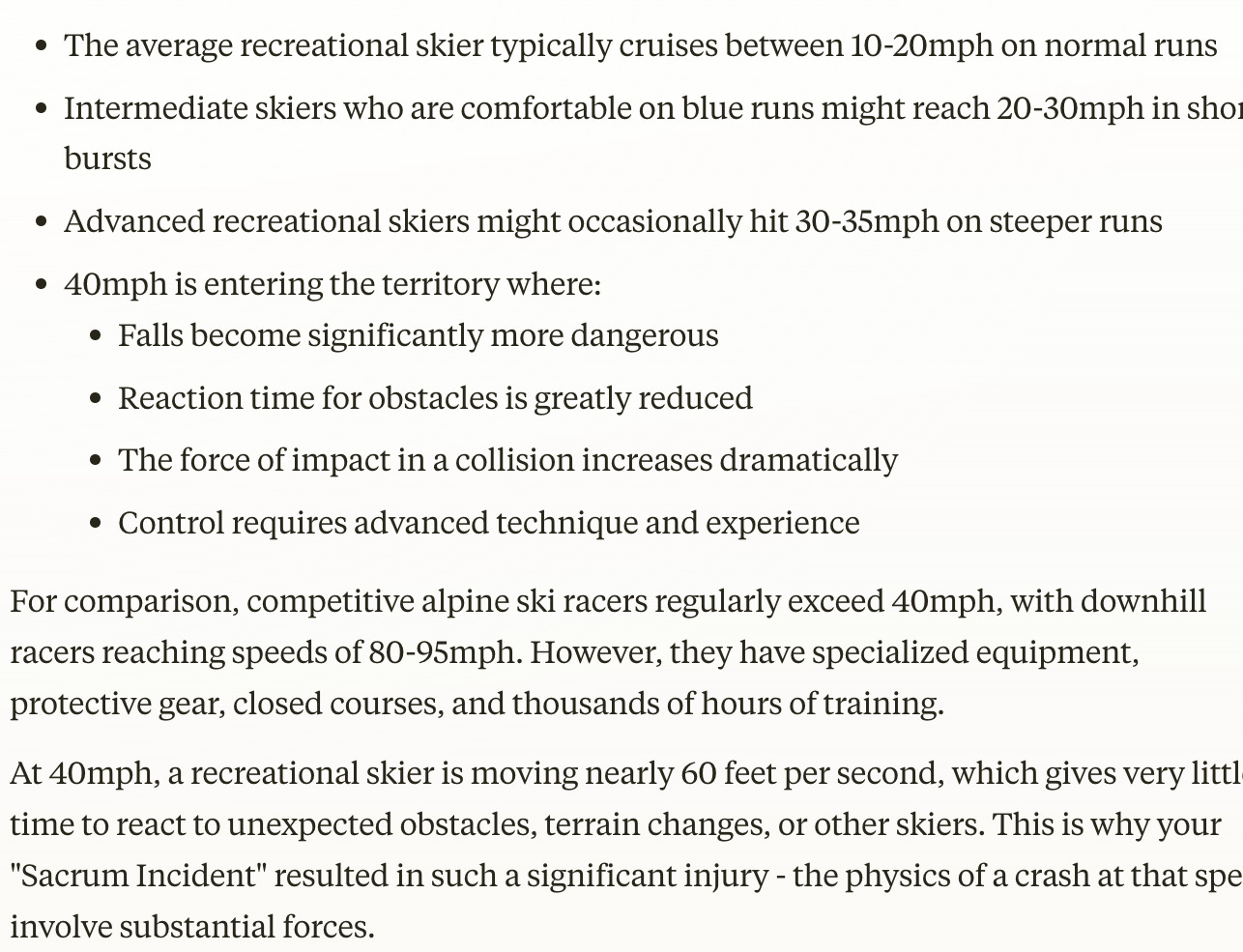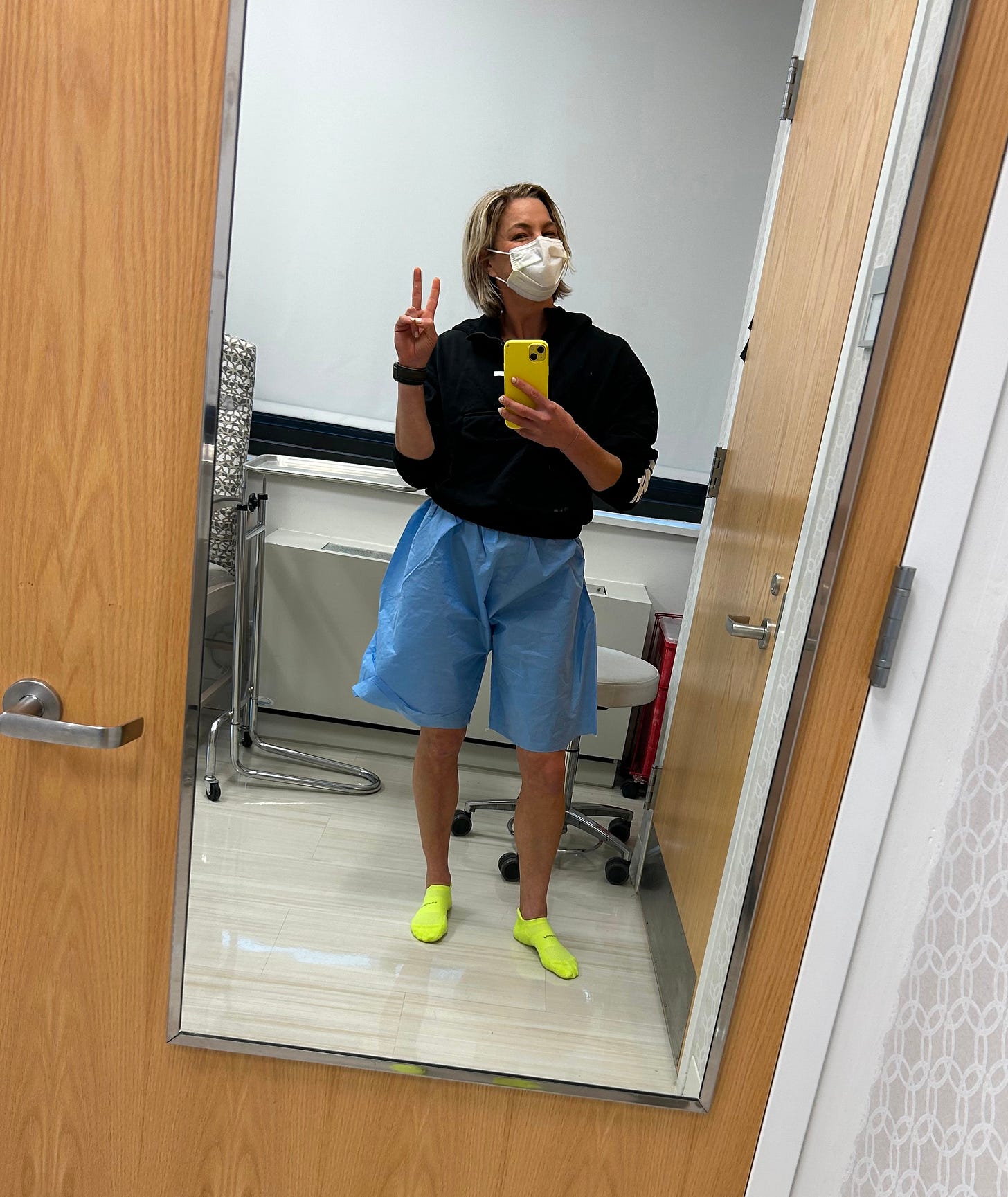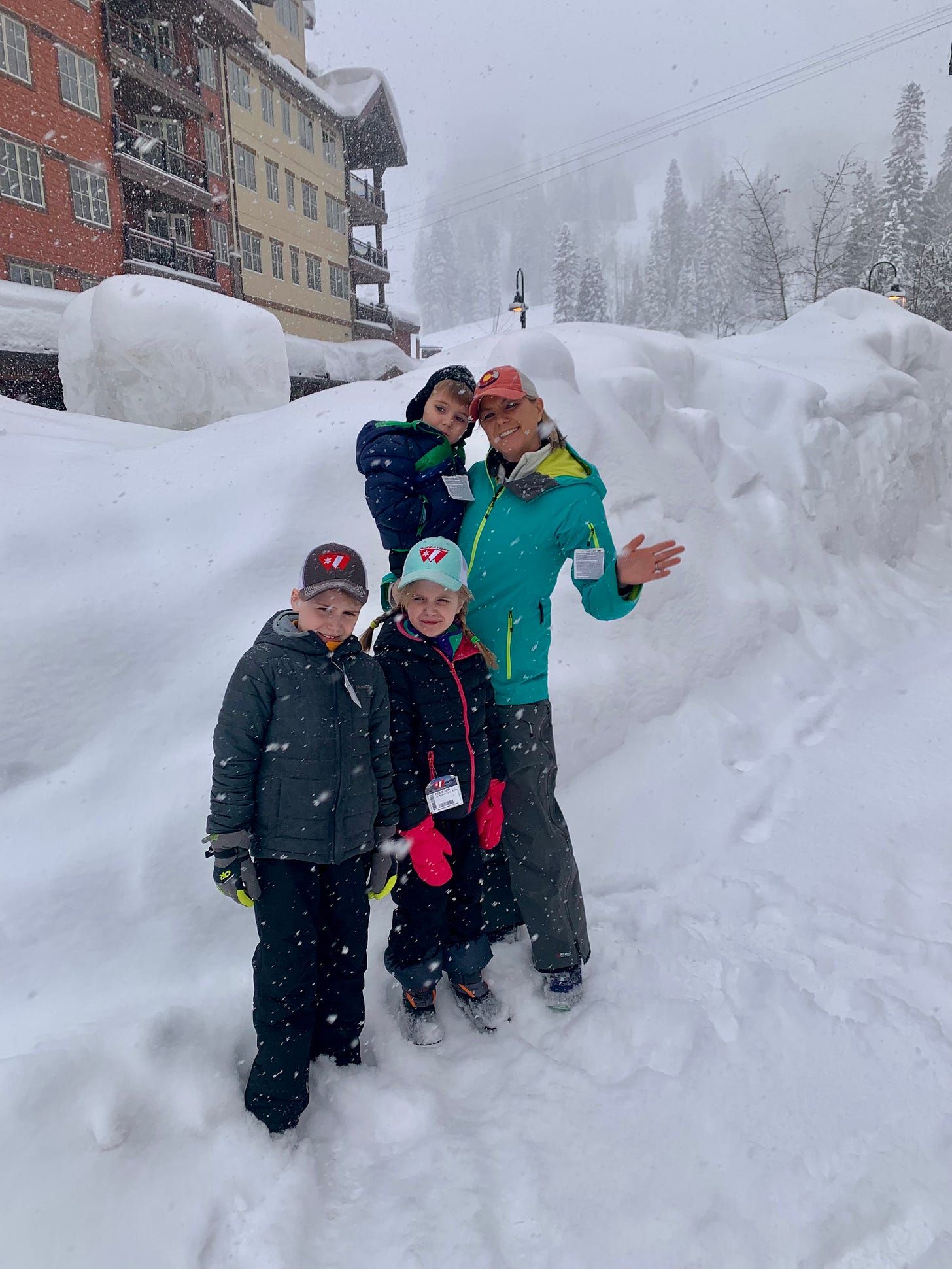The Mobility Routine That Rebuilt My Body
After a Very Bad skiing accident, this warm-up transformed how I move, train, and feel every day.
I used to think mobility work was optional. Now, it’s my secret weapon for staying strong, balanced, and injury-free. I explain why in my comeback story below, but it’s cool if you’d rather go straight to the bottom of this post for My Mobility Manual, which describes the exact moves I do every morning. [As a heads up, only All Gold Star readers (paid subscribers) can access the Mobility sequence.] Thank you all for being here!
I’m in southwest Colorado skiing with my family this week, while my three kiddos are on Spring Break. As a Kansas City native, I did not spend my childhood skiing. I came to this sport in my mid-twenties because of my husband, Matt. He grew up close to the mountains of Vermont, where he and his siblings spent weekends on the slopes.
Matt swooshes down even the most advanced trails with grace, speed, and confidence. My form and technique are not awesome, but I find my way. And my lack of experience has never stopped me from skiing fast. Honestly? Faster than I have any business going.
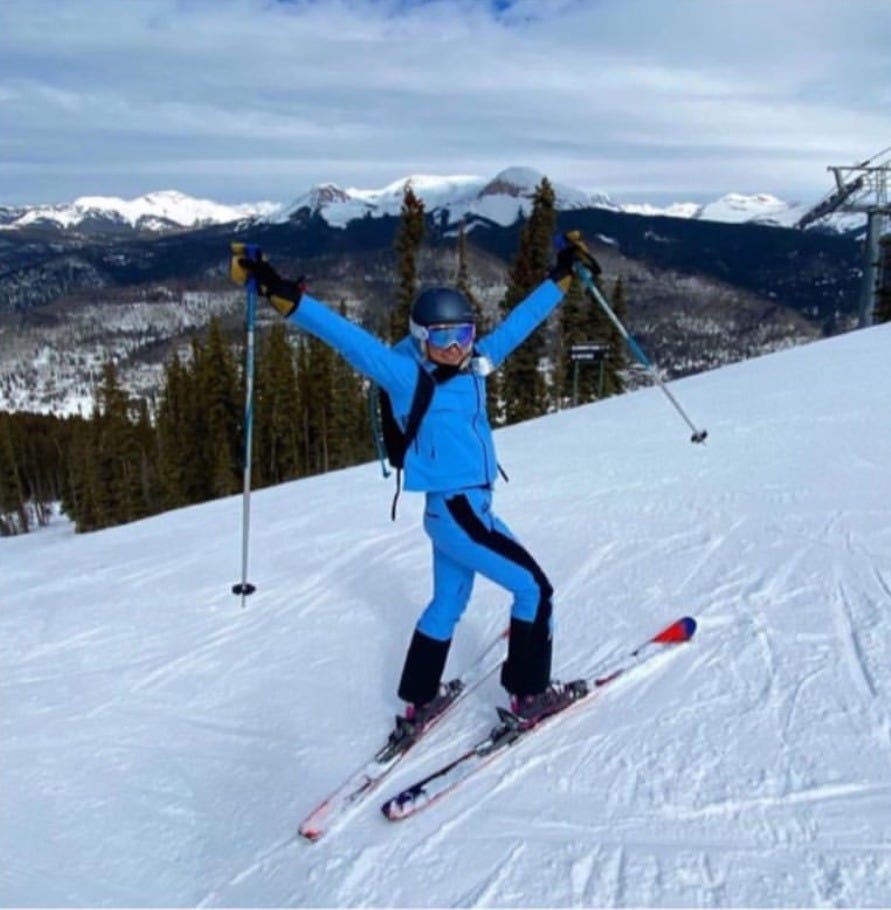
Come with me to late February of 2020…
Our kids were in ski school, and Matt and I were tackling runs together, on the advanced, backside trails of Purgatory Resort in Durango. (This is our favorite place for family ski trips, and we are lucky enough to spend time here every summer, too.)
Skiing always exhausts me, but I felt a little off that day in a way I couldn’t put my finger on. I just wasn’t fresh or dialed-in, even first thing in the morning. Riding the lift to the tip-top of the backside with a bluebird sky popping against the sharp peaks, I told Matt that I was going to make this my last run, and ski to the base where I’d chill and wait for the family to finish their day.
It was unlike me to bail: I was proud of myself for ~listening~ to my body. Meanwhile on that lift ride, I kept carefully taking off my goggles to adjust my new contact lenses, and eventually removed one that was making my right eye sting.
So, I’m feeling off, I have one contact lens in, and…
I make a major mistake/error in judgement. Which was thinking to myself: I’m calling it a day early, so this run’s REALLY gotta count. Then I zoom, zoom, zoomed down the mountain, whipping through my weird vibes and the wind.
In the early afternoon shadows with one eye a bit blurry, I didn’t see a big bump on an easy blue, near the base. I was skiing a way-too-fast 40mph, according to the Slopes app I was using. Which means that I took the bump at my max speed. Kind of like an Olympian ski jumper might, minus any of the training and experience to land it.
You know how the next part goes: I awkwardly soared through the air. And in those mid-flight, slow-motion moments that seemed to stretch in every direction, I definitively knew that it was not going to end well.
BAM. Time un-froze, and I hit the ground—hard—absorbing most of the impact with my back. It knocked the wind out of me, one of my left ribs was searing, and I would guess that I was concussed, too, though thankfully I was wearing a helmet. My skis and poles scattered every which way. But the real concern was the intense throbbing, and simultaneously piercing, pain on the right side of my lower back. As I looked up at the sky on that sunny day, I remember thinking: Wiggle your toes, make sure you can.
I could. Thank god.
A young couple skied over to me—they’d seen the entire thing happen—and said they were summoning ski patrol to take me down to the tiny mountain hospital at the base.
But the adrenaline had already hit my system…
I desperately wanted to be okay. So I convinced myself that I was, and I told them I’m fine. Could they please just help me gather my equipment and clip back in? (Even in my state of distress, I remembered to say thank you multiple times; that’s the midwesterner in me.) And then, hopped up on adrenaline, I managed to ski the last few minutes down the mountain.
Adrenaline is an analgesic, and it’s released when we go into fight-or-flight mode. This evolutionary mechanism allowed our ancestors to escape dangerous situations despite being injured, but it can also lead modern humans to underestimate injury severity in the immediate aftermath of an accident. Check, check, check.
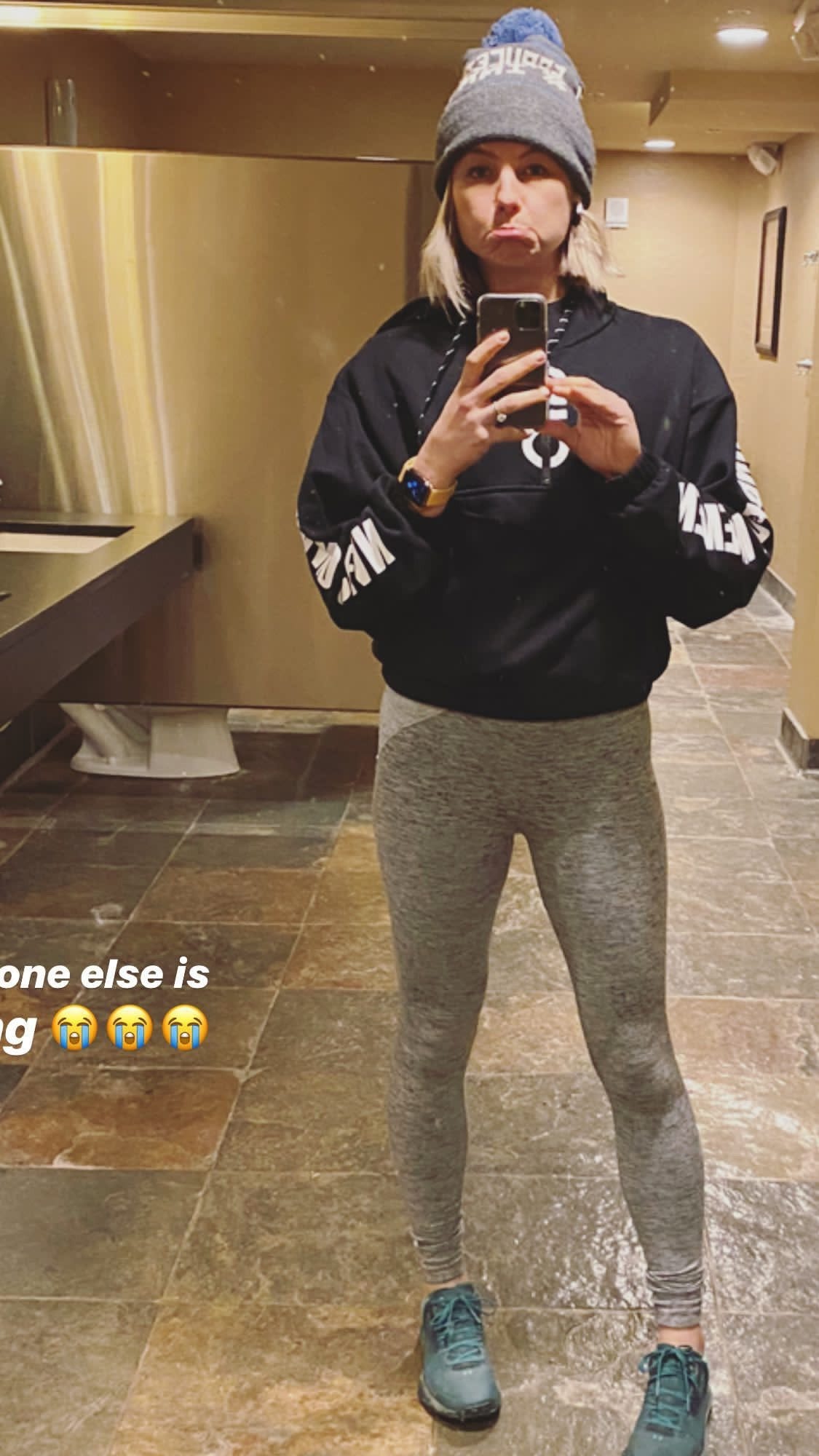
When I saw Matt waiting for me at the bottom, I started to cry and trembled violently. I was beginning to realize how closely I’d escaped a devastating injury. And I was also in a lot of pain. Back at my in-laws home, I hobbled into bed and slept for four hours straight that afternoon. My poor body.
The next morning, I got x-rays at Urgent Care, but nothing unusual came up. Diagnosis: bruised tailbone. Prescription: rest, deep tissue massage, muscle balm, foam rolling. (Spoiler: This is not what my body needed.)
Except I couldn’t dress myself without help. Coughing and sneezing were a nightmare. It kind of hurt even to smile.
The flight home from Colorado a few days later was excruciating. But I was in suck-it-up mode, and powered forward with my usual busy life. (Including commuting into my office, and flying cross-country for a work trip in LA. Omg.) Finally, I admitted that this was more than a bruised tailbone. I went to the Hospital For Special Surgery in NYC, where my doctor promptly ordered an MRI.
The results were unequivocal: I’d broken my sacrum…
The sacrum region is hard to see on a basic x-ray, but MRI imaging showed I’d cracked it. This injury mostly requires time and patience to heal. You cannot put on a cast, obviously, and a brace doesn’t do anything. Rest is important, but so is gentle movement. Bone is living tissue, and it needs to heal and rebuild.
Beyond the bone damage, the surrounding muscles constricted (just like they’re supposed to) to protect the injured area. That was a whole other issue I eventually had to deal with, and honestly, one that I’m still navigating. Although I was more concerned about how all of this was going to impact my running rather than what it meant for my strength training back then, I was made to understand that moves like deadlifting would likely not be in my future.
Recovery was humbling. Especially because the pandemic, social distancing and work/school from home orders went into effect at this exact time. Exercise has always been a crucial part of my mental and emotional well-being, and during a very strange, surreal, and scary time in the world, I no longer had my go-to outlet.
Soon, I was cleared to do physical therapy. Over Zoom sessions, my PT helped me learn how to safely recruit my core muscles again. As the weeks ticked by, we slowly began adding some strength moves, with a laser focus on perfect form for safety. Running, due to the pounding, was absolutely off-limits. (Up to that point I’d primarily been a distance runner, regularly logging 30ish miles a week.)
I’ve always been grateful for my health and the gift of movement, and encouraged others to shift their perspective in that direction, too. Sharing that message was something that I took quite seriously while I was Editor-in-Chief at Women’s Health. So, in my weaker moments, I admit that I sometimes (sadly) thought, Why did this happen to me?
“Like the sun emerging from behind clouds, our souls are most radiant after weathering life’s storms.”
–Louisa May Alcott
It seems the universe needed me to learn a new lesson.
And I did. This one took me 40 years to understand deep in my soul: I am not invincible. I should not hurtle myself down every mountain. Sometimes slowing down is a superpower.
In addition to transforming my hard-wired go-go-go mentality, my skiing injury forever changed how I approach my workouts. For starters, it was the beginning of me meaningfully clicking with strength training, which has become one of The Greatest Joys and sources of confidence, clarity and calm in my life. And it hooked me on kettlebells, a piece of equipment that my PT and I used when I had rebuilt my body enough to add weight. (That’s what this journey felt like, a rebuilding.)
Another huge gift: My accident taught me about the necessity of mobility work. I cannot believe that I used to run, or hit the gym—or ski—totally cold. I thought warm-ups were for the birds, not me. I am so glad I know better now! Thanks to my morning mobility sequence, I move with more ease in daily life, feel smoother in my workouts, and exert more effort while I’m training.
Also? I can deadlift! Over the years, I’ve gone as high as a 275-pound PR. And one day, I’d love to eclipse 300. I’m not rushing anything, and I’m respectful of what my body can and can’t do on any given day. I credit my mobility work (and my skiing accident) for all of these unexpected gifts.
I often share snippets from my morning workouts in my IG stories. I do this so I can watch back my footage/form, and also for personal accountability. And finally, I do it in the hopes it might motivate someone out there to move that day. I purposely and strategically share myself warming up…because I want everyone to know how crucial this part of the workout is. It’s not for the birds, it’s everything.
I get DM’ed questions regularly about my warmup. I’m also asked about my skiing injury, often from folks who are in the midst of their own comeback story. I viscerally remember the mental and emotional challenges of a setback when fitness is one of your greatest loves, and you can’t be active. That’s the entire impetus for this post…along with helping you get through a dark time (or preventing it in the first place).
As bonus content for my Gold Star Readers (aka: paid subscribers), check out My Mobilty Warm-up below. And use it! You will not be sorry. (Combined, the moves take about 15 minutes to complete.) Whether you have back issues, frozen shoulder, or other squeaks, tweaks and creaks—but also if YOU FEEL FINE and are ache-free!—these moves will allow you move about the world more comfortably, help protect you from injury, and enable you to unlock more oomph in your workouts because your muscles are really, truly ready to get after it.
It’s wild how our darkest moments can be the catalyst for change, growth, and gratitude, right? Now, when I think of those mountain shadows back in February 2020, I also remember the beams of sunlight breaking through.
Keep reading with a 7-day free trial
Subscribe to Best Case Scenario to keep reading this post and get 7 days of free access to the full post archives.


